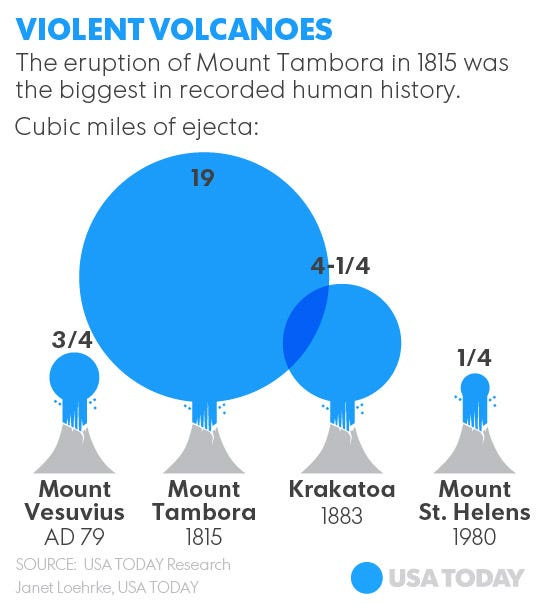Sustainability vs. Resilience in a Volcanic Future
The Year 1816 and the Shadow Over Renewable Energy
The year 1816, known as the "Year Without a Summer," stands as a stark historical example of how vulnerable human society can be to climate anomalies. This period was characterized by significant global cooling, likely triggered by a combination of volcanic activity, including the cataclysmic eruption of Mount Tambora in 1815, and low solar activity during the Dalton Minimum. The eruption propelled massive quantities of volcanic ash into the atmosphere, blocking sunlight and leading to widespread cooling. The effects of this event were compounded by the Little Ice Age, a period of cooling that had already been affecting the planet since the 14th century.
The result was catastrophic. Summer temperatures plummeted, leading to widespread crop failures and food shortages across the Northern Hemisphere. The consequences rippled through societies, leading to price inflation for food, famines, social unrest, and the migration of populations seeking better conditions. It is believed that the lack of oats, due to crop failures, made it expensive to feed horses, the primary mode of transport at the time, which inspired the invention of the bicycle as an alternative means of travel.
The Year Without a Summer serves as a cautionary tale for modern society, particularly as it pertains to the resilience of our infrastructure. Today, there is a push towards building a more sustainable and less carbon-intensive energy grid, primarily driven by the perceived need to curb carbon emissions in the hope of stopping climate change. However, the rush towards renewable energy sources, like wind and solar, may compromise the grid's reliability, especially in the face of extreme climate events such as volcanic eruptions.
In a hypothetical scenario akin to the Year Without a Summer,
Keep reading with a 7-day free trial
Subscribe to Irrational Fear to keep reading this post and get 7 days of free access to the full post archives.





